LEDs are now well understood, I have worked with them since 2005 in power ranges from milliwatt to tens of kilowatts.
The "idea" is to use the cheap, large, 100W LED arrays (approx. 10$ a pop on eBay) both in under-voltage (for continuous lighting of scene without heating) or over-voltage (during a short flash, the wattage is high but time is too short for significant energy absortion and heat generation).
The more LED, the better : the energy (and heat) is scattered over a larger surface and photography rarely likes light point-sources. So let's mount several modules on a flat heatsink, the rest is "just a matter of electronics" right ?
The battery pack is made of LiPo cells (designed for RC models) which are flat and can sustain short high-current pulses.
The LEDs will switch from one unusual regime to another :
For the Flash regime : #Bullet Movies has tested microsecond pulses but the light output must be greater ! more current, longer time, in the millisecond range or more. This means incredible current spikes and even greater parasitic problems. Brace yourselves !
For the "lighting" regime, the only two considerations are the temperature and the energy source's autonomy.
- I'd like to have about 1 or 2h of autonomy
- Temperature should not rise above 40°C
Well, the second part is easy to deal with because I've already created a cheap, simple linear system for strong temperature feedback. But this system is battery operated so it needs a more energy-efficient regulator !
Once again, I repeat : the actual power will not be 400W ! Probably in the 10 to 20W range once the temperature has settled. Undervolting the LED makes them more efficient and the heat is spread across the whole heatsink, reducing strain on the parts. It's better to undervolt a 100W module than use a 20W module at rated power (less "hot spots" and much more headroom for overdriving during flashes). See the discussions in the logs.
Logs:
1. Another ordering mistake
2. Energy source
3. Structure
4. More progress
.
 Yann Guidon / YGDES
Yann Guidon / YGDES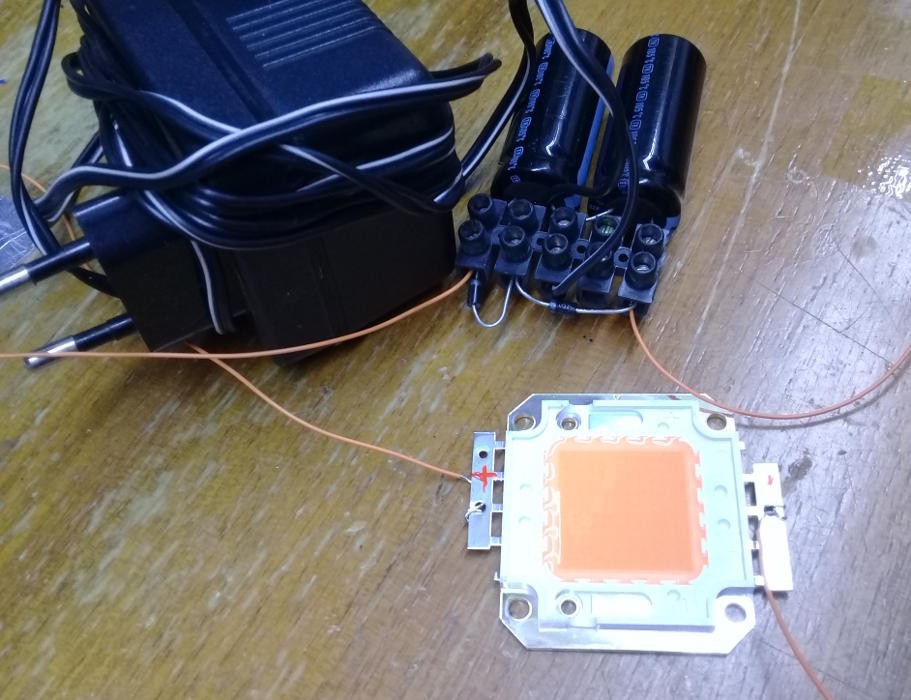
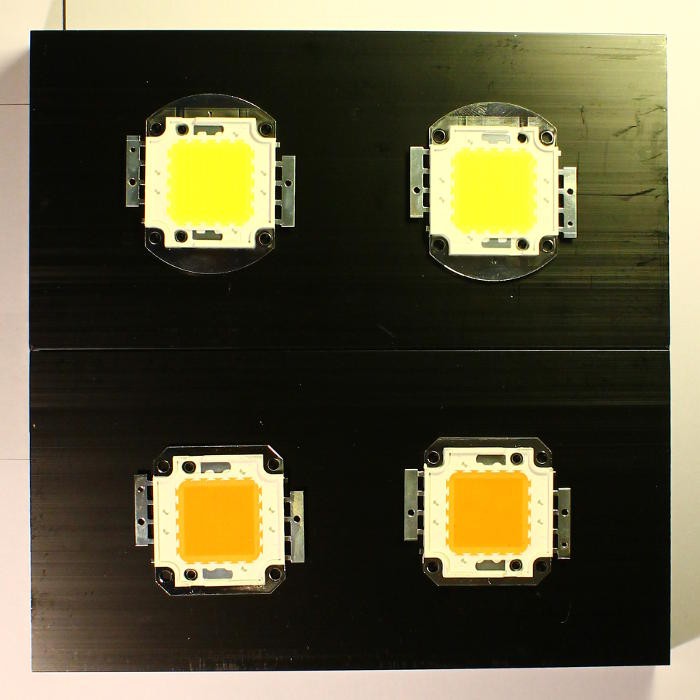
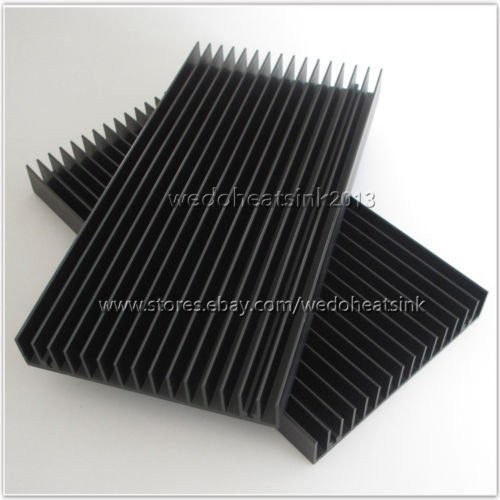
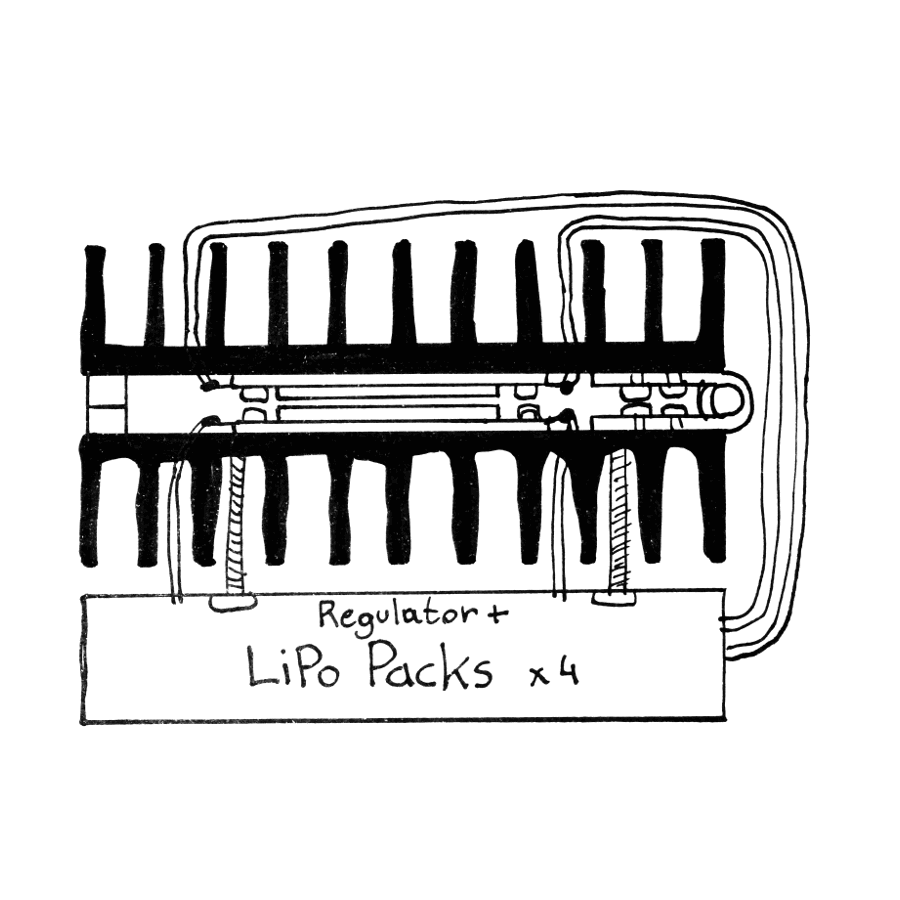
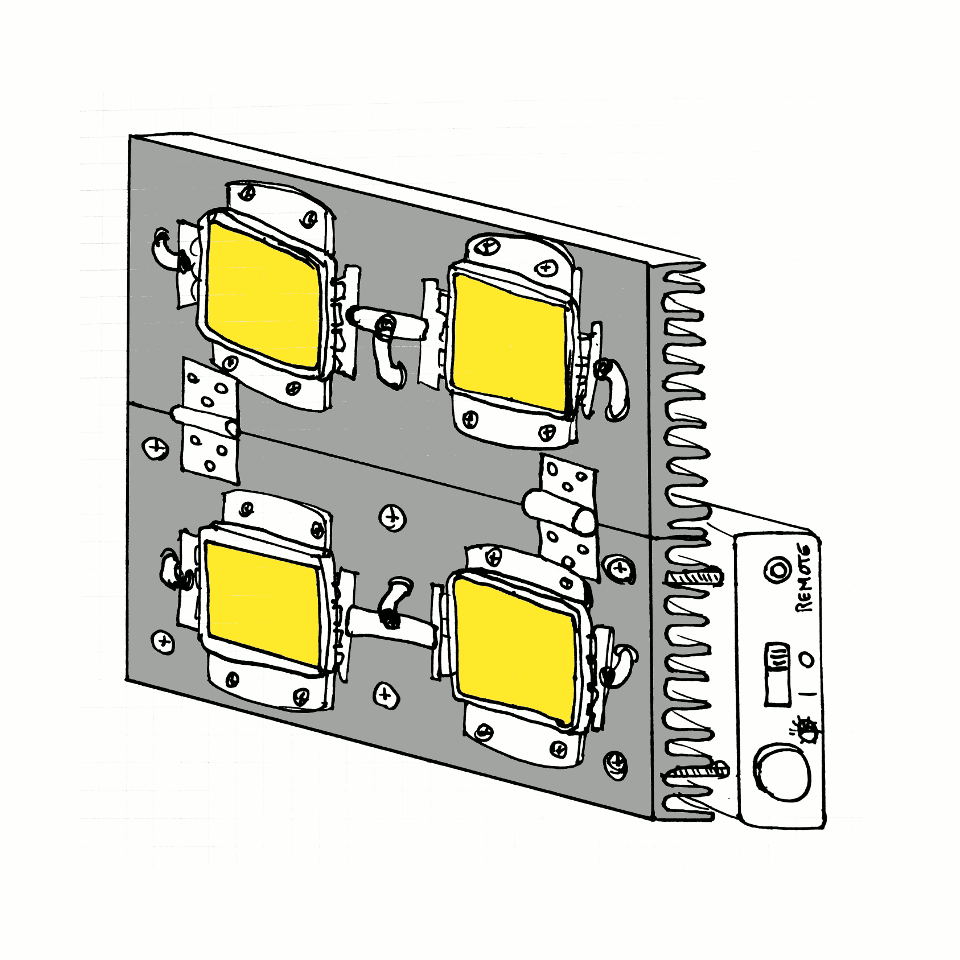
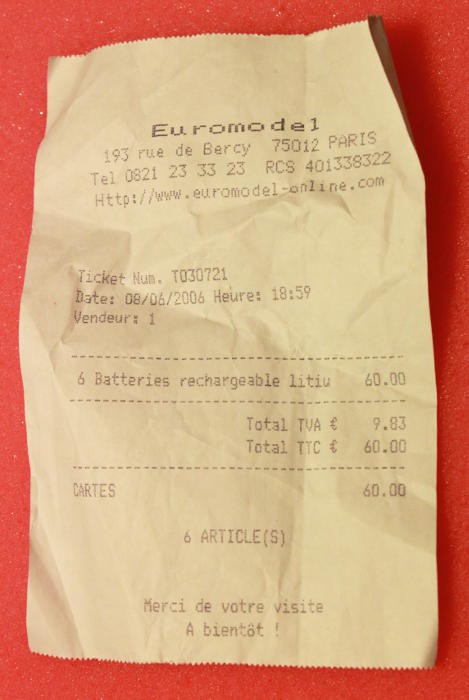
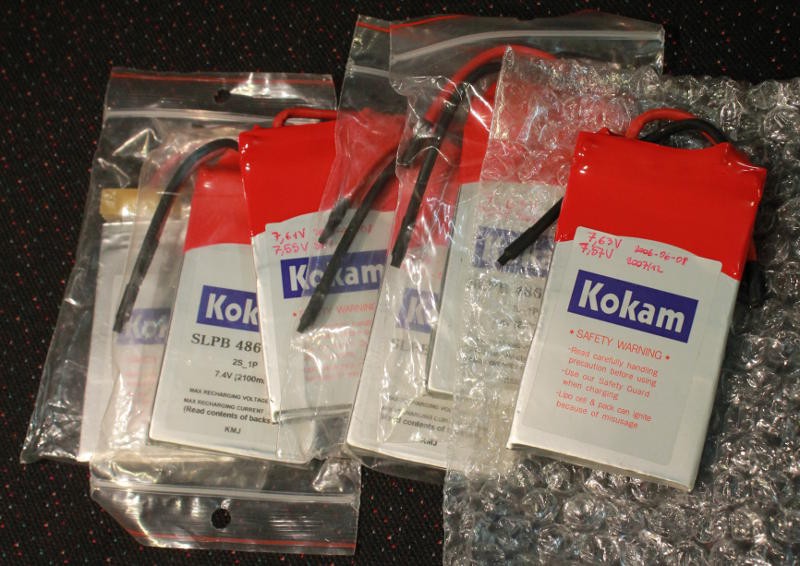
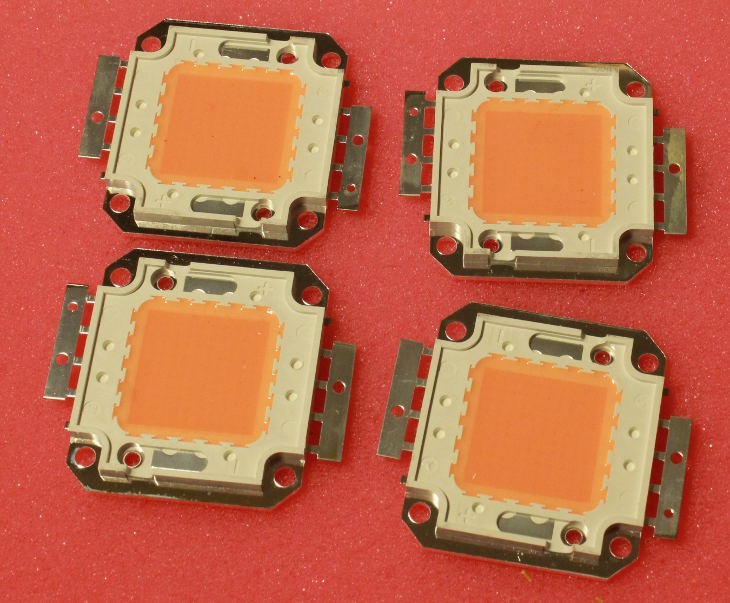
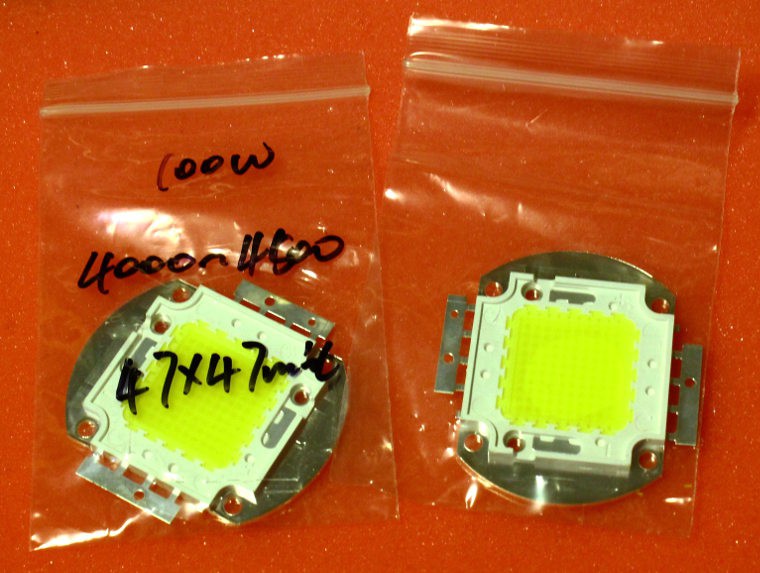 (yes, the coating messed with my camera's white balance)
(yes, the coating messed with my camera's white balance)



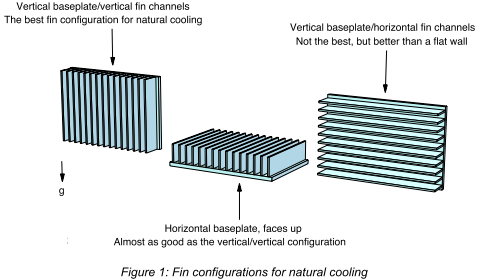


r